I am designing and building circuits which use 100Mb/s on a Low Voltage Differential Signaling (LVDS) bus. Some of these signals need to travel between PCBs on hand made cables. The problem is that I have no way of verifying the quality of the cables and termination.
If I was a millionaire, I'd get an expensive 'scope or a vector network analyser. But failing that, is there some way I can measure the reflected signals, or the impedance of the cable?
(I have a 150MHz bandwidth, 500MSPS 'scope available).
Added: Information about the data on the wire, taken from the ET1200 datasheet.

Added: 21 hours to go. Last chance for the bounty. Can anyone suggest even a quick and dirty way to measure impedance? Perhaps some kind of bridge where I could compare the cable against a known good cable?
